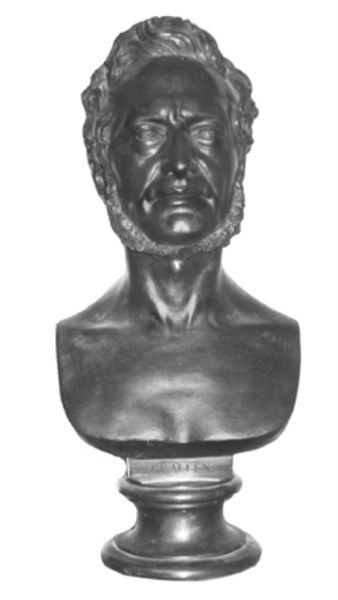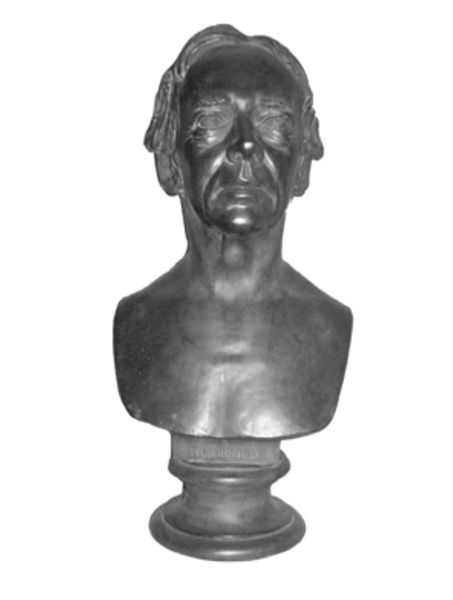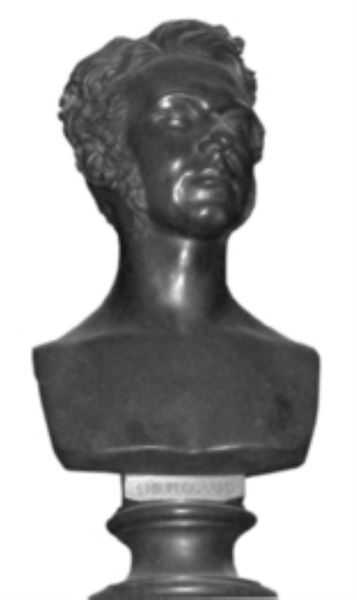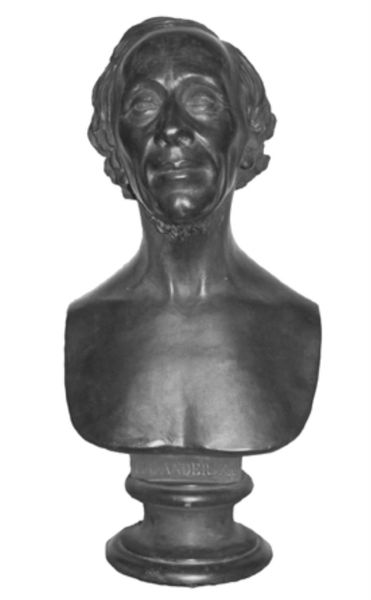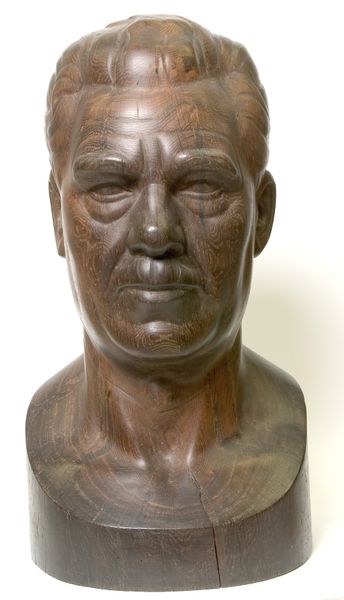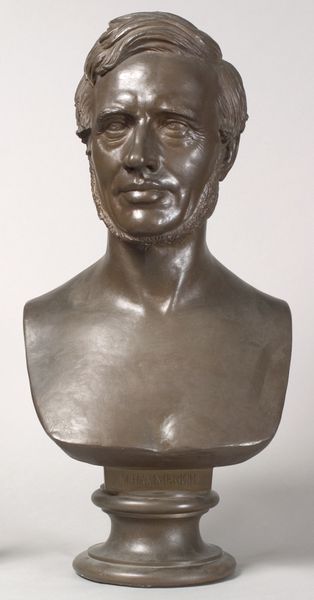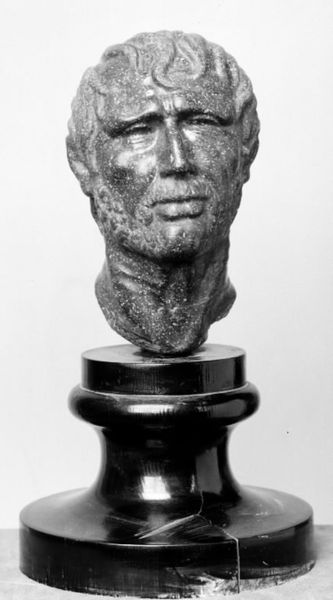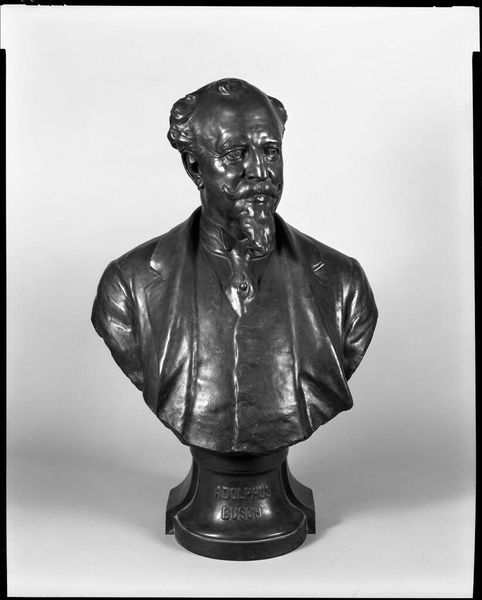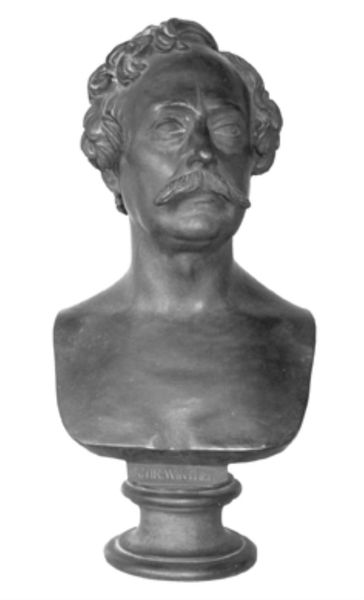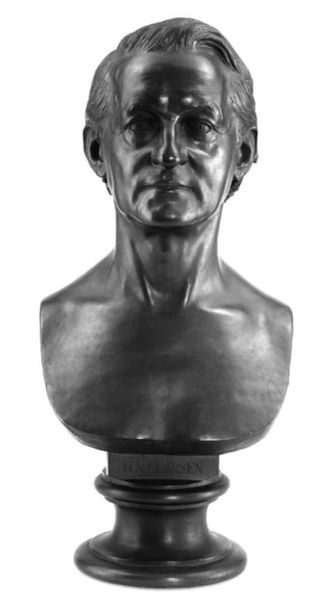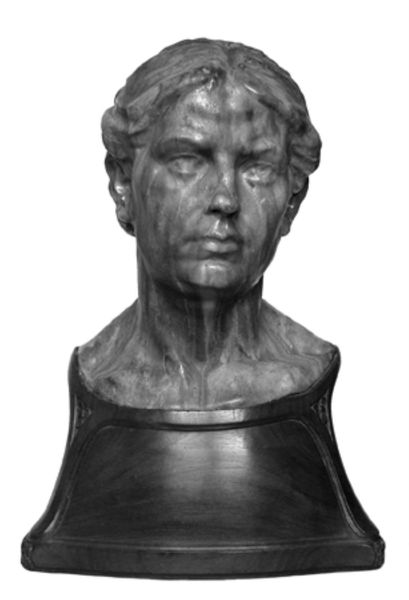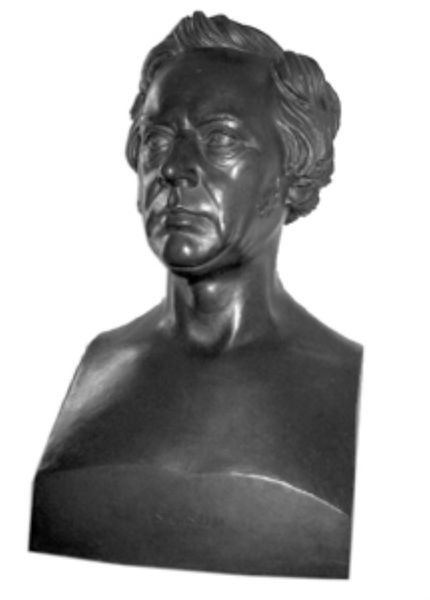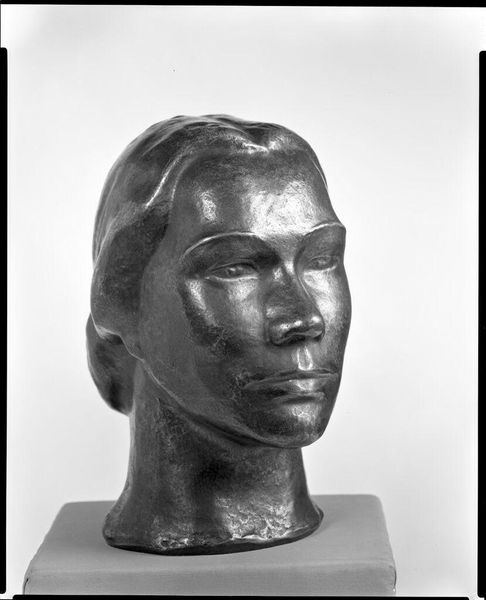
metal, bronze, sculpture
#
portrait
#
neoclacissism
#
metal
#
sculpture
#
bronze
#
sculpture
#
history-painting
#
realism
Dimensions: 65 cm (height) (Netto)
Editor: Here we have a bronze sculpture from 1857, "The Poet and Politician Carl Ploug" by H.W. Bissen. The weight of the bronze and the solemn expression give it a very serious feel. What can you tell me about it? Curator: It certainly does have that stoic presence, doesn’t it? Looking at this, I'm struck by how Bissen captured the very *idea* of a 19th-century intellectual. Forget capturing a fleeting likeness. This is about *immortalizing* a leader. Think of those grand Roman busts – a deliberate echo, wouldn’t you say? Almost as if Bissen is saying "Ploug? He’s not just a politician, he's a new Caesar… of Denmark!". Do you see that subtle realism meeting a craving for some neoclassical heroicism? Editor: Absolutely! There's something inherently timeless about the sculpture. But beyond the historical context, how does the artist’s choice of bronze play into the overall effect? Curator: Ah, good question! Bronze, with its durability and rich patina, lends a sense of permanence, a monumentality. This isn’t some fleeting fancy; it's meant to last. I always wonder what Ploug himself thought. Imagine sitting for Bissen, knowing your face will be forever cast in… well, judgment, in a way. Editor: So, bronze adds to that sense of gravitas and historical weight. I never would have seen it that way if we hadn't spoken about it! Thanks! Curator: My pleasure! That’s the thing about art, isn’t it? The materials whisper secrets of the artist’s intention, inviting us to listen closely.
Comments
No comments
Be the first to comment and join the conversation on the ultimate creative platform.
